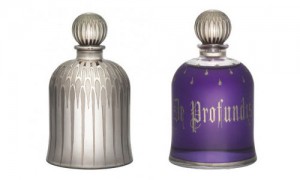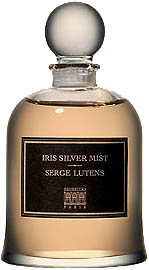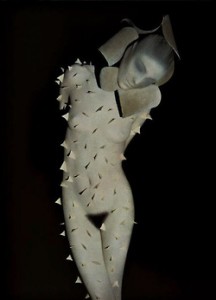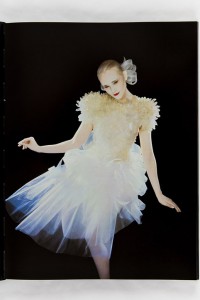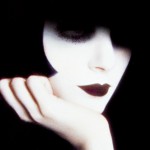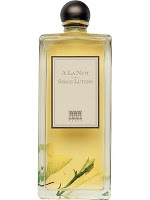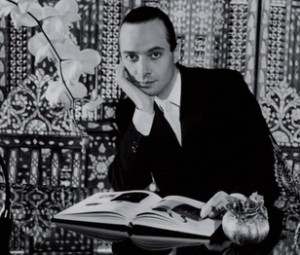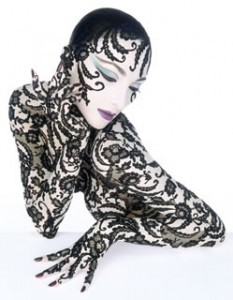Serge Lutens – Jeux de Peau
 It’s as if the baker took us by the hand.
It’s as if the baker took us by the hand. 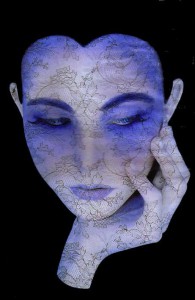
Your childhood is a slope. The farther down you go, the more it comes back to you. You must separate the wheat from the chaff to know who you are. All this to say that the smell of fresh bread from the bakery takes us back. The feel of warm bread against the cheek even more so, evoking a familiar sensation from my childhood.  Serge Lutens
Serge Lutens
If the exploration of fragrance is a journey that takes place both externally and internally, then no other house stretches the imagination further than Serge Lutens. The relationship between Lutens and nose Christopher Sheldrake seems almost supernatural – as though Sheldrake is able to channel the incredible imagery and visions of Monsieur Lutens and render them into olfactory reality. At least it appears that he is somehow channeling Lutens, because the resulting fragrances are so thoroughly in keeping with Lutens’s singular aesthetic and vernacular, not to mention so profoundly different than what Sheldrake has created for Chanel in collaboration with Jacques Polge, that some greater force must be at work.
While all of the Lutens/Sheldrake fragrances are exceedingly unique, there is a common thread of oddity that runs through them, beyond the scent signatures which most houses possess. As I have discussed previously in my review of Gris Clair… I imagine the Lutens line to be organized in a manner similar to a color wheel, with certain fragrances occupying a common general spectrum. To that end, I would categorize Jeux de Peau in the olfactory realm occupied by Chypre Rouge and perhaps Arabie, although the fragrance shares some similarities with Boxeuses as well. While I realize that this will immediately make Jeux de Peau a non-starter for many, Jeux de Peau is one of those beauties that slowly captivates and seduces, despite its oddity, or perhaps even because of it.
Jeux de Peau, loosely translated as “skin games” from the French, is certainly imbued with a sense of playfulness, as Lutens sought to capture the scent of freshly baked bread from his childhood in Lille, France. I wonder if he gained a sense of impish satisfaction imagining perfumistas worldwide attempting to sniff out the reputed bread note upon first obtaining their samples. While I was able to root out the elusive note, the fragrance for me represents a full breakfast compliment, as well as some non-breakfast foods. To relegate Jeux de Peau to a simple prank on the part of its maker, however, is to miss the true genius and beauty of this creation. Certainly, the Lutens/Sheldrake duo take us through an intellectual exercise, which keeps the wearer occupied and amused throughout the day, but one which does not diminish the overall result.
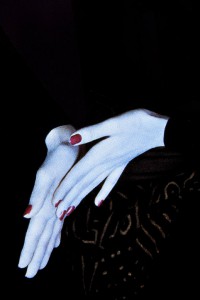
Jeux de Peau starts out with a brief green note, a cross between celery and green anise. The impression is fleeting and somewhat confusing upon first testing, because it is so obviously not breadlike. The note fades rather quickly, transforming into something that recalls the immortelle-like note in Chypre Rouge. After wearing Jeux de Peau a few times, this opening feels like a palate cleanser one has between courses at a sumptuous meal in order to better appreciate the nuances of the next course. The duo is clearly preparing us for something.
Jeux de Peau has the bitterness of yeast, coupled with the rich milkiness of oozing butter. There is a slight sweetness, as though the bread in question were a gorgeous brioche, its buttery richness toasted to the point of caramelizing. Notes of licorice and coconut combine to give a complex, creamy dimensionality to the fragrance. The compliment to the toasted note comes in the form of a luscious, dense fruit jam, thanks to a melange of apricot and osmanthus, giving the fragrance a typical Lutensian opulence. All at once I realize this is no brioche, it is in fact a tarte tatin a l’abricot, warm and steaming from the oven, the thick apricot juices flowing over the sides and hardening into a glistening caramel crust. Despite what would seem to be an obvious gourmand effect, the fragrance is not as sweet as its counterparts in this category. Here Sheldrake’s skill as a perfumer seems most apparent – one has the intellectual impression of sweet pastry without it being overbearing or uncomfortable.
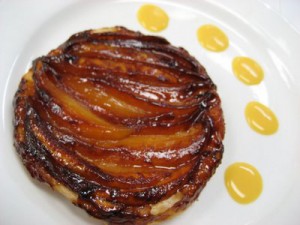
After the initial cerebral play that Lutens/Sheldrake have just taken us through, the game involving the skin appears in the journey from Lutens’s memory to a place of sheer beauty. As a gift for accompanying the duo on this mental exercise, we are rewarded with a supremely beautiful fragrance. Incense, rich sandalwood and a touch of Lutens’s signature amber come together to reveal a refined and classically beautiful scent. While Jeux de Peau was initially one of the most difficult fragrances for me out of the Lutens line, after revisiting, it eventually became one of my favorites. Aside from the joy of wearing a beautiful perfume, there is a sense of emotional communion with its creator in the magical realm of memory, making Jeux de Peau a supremely intimate experience.
Oriental
Notes: Milk, licorice, coconut, osmanthus, apricot, amber, incense and sandalwood
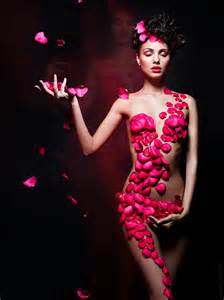 Fragrances are, for the most part, an exercise in artifice: by combining a series of notes, perfumers are able to weave together a cohesive scent that evolves over time. At times, the notes work in harmony to create complementary accords or impressions, while other fragrances charm us with seemingly incongruous themes that somehow work together beautifully (think Missoni Eau de Parfum, with its alternating layers of fruit and chocolate).
Fragrances are, for the most part, an exercise in artifice: by combining a series of notes, perfumers are able to weave together a cohesive scent that evolves over time. At times, the notes work in harmony to create complementary accords or impressions, while other fragrances charm us with seemingly incongruous themes that somehow work together beautifully (think Missoni Eau de Parfum, with its alternating layers of fruit and chocolate).



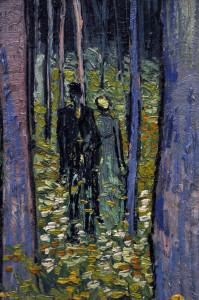
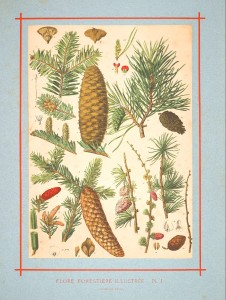
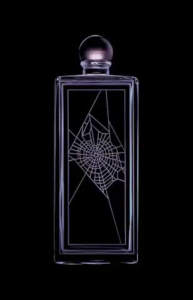
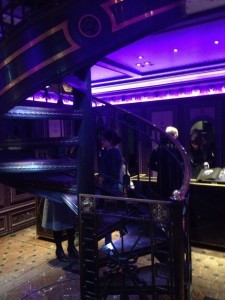
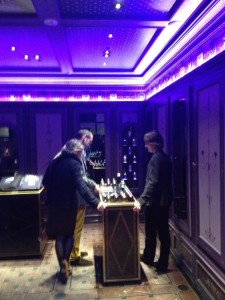
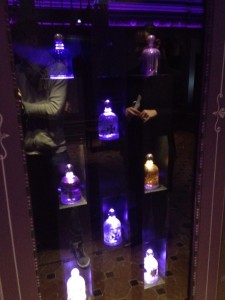
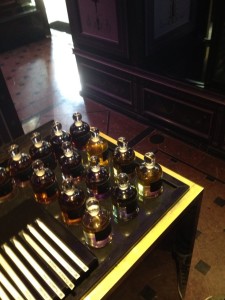
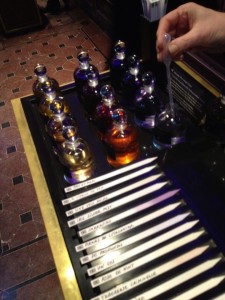
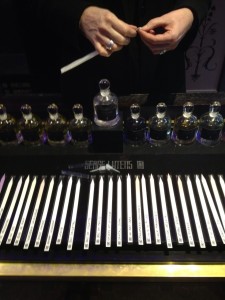

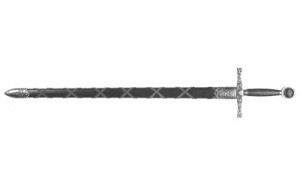
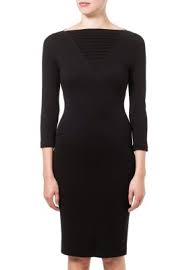
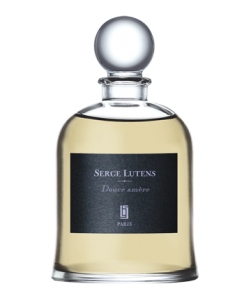
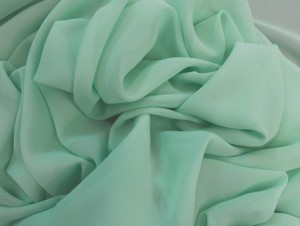
 First bitter, then sweet, it’s absinthe of course.
First bitter, then sweet, it’s absinthe of course. Serge Lutens
Serge Lutens